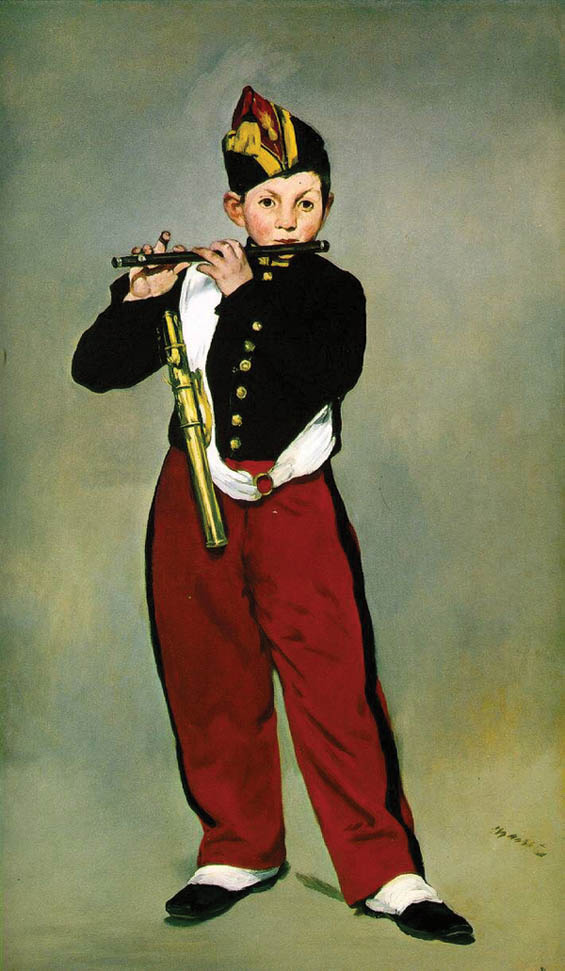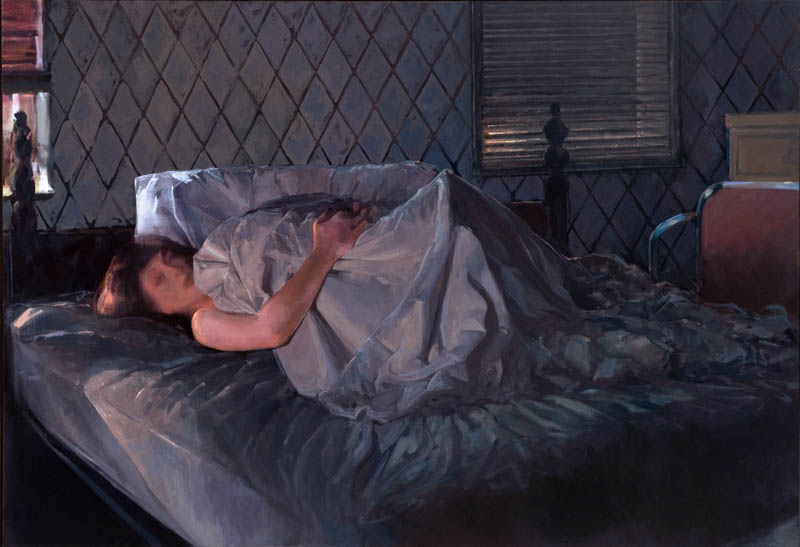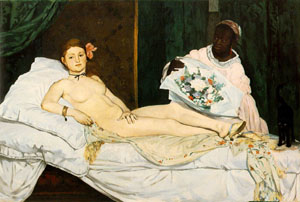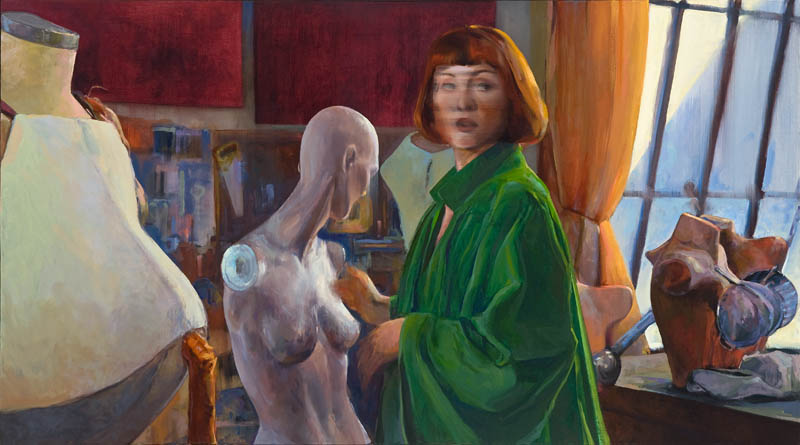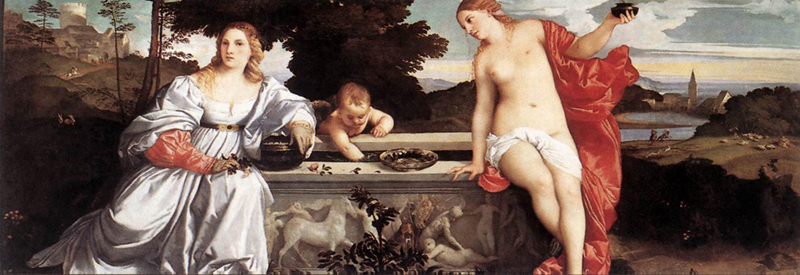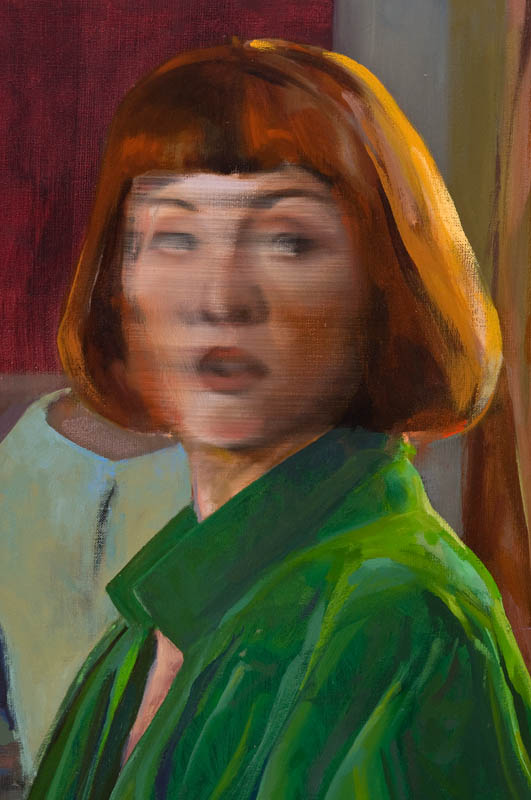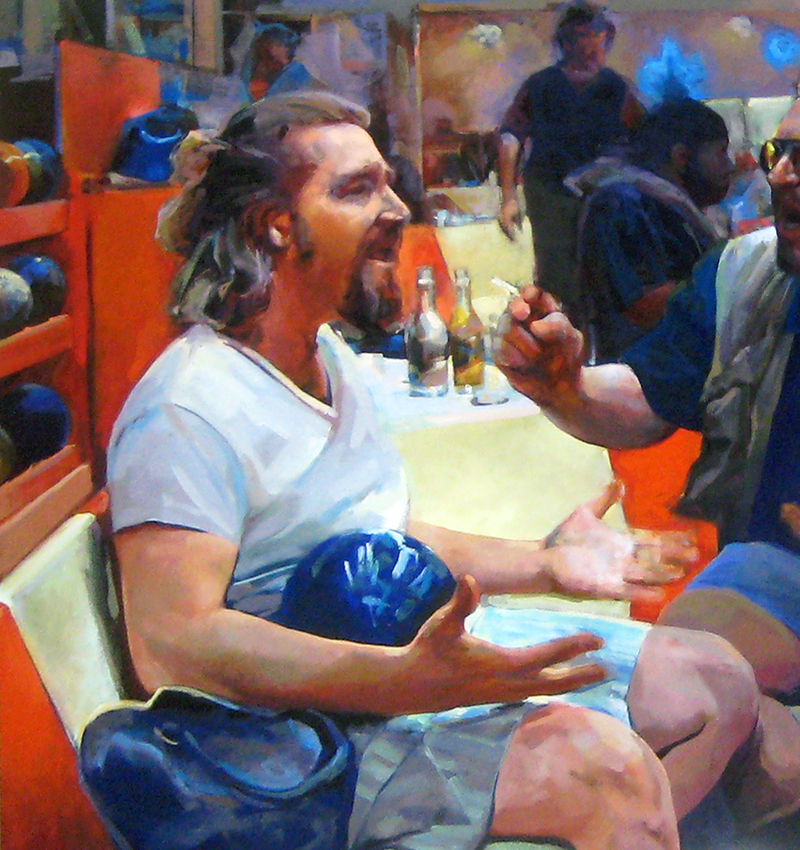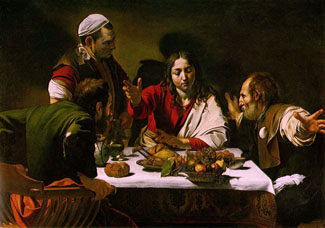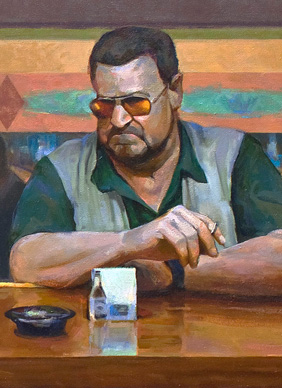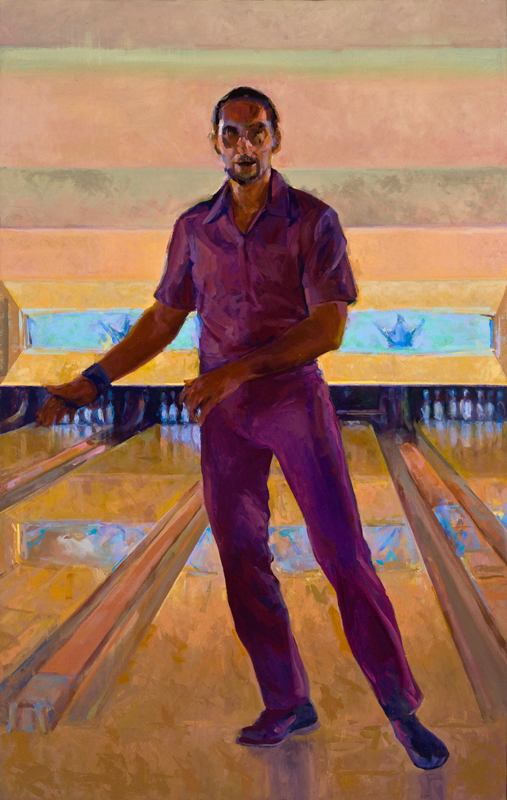
Jester (After Velazquez's Portrait of Pablo de Valladolid) • Joe Forkan oil on linen, 48" x 76" (121.92 cm x 193.04 cm)
THE LEBOWSKI CYCLE – (Wall text from the exhibition) The Lebowski Cycle is a series of paintings and drawings exploring layered narratives, using masterpieces of European art and the 1998 Coen Brothers’ film The Big Lebowski as a starting point. The series is the result of a longstanding interest in narrative painting, particularly paintings from the Baroque and Neoclassical eras; complex figurative works that depict grand story arcs, compressing a multitude of thoughts, ideas and emotions into a singular image. However, it is the human interactions and conflicts, formal qualities, and modes of depiction that were as interesting to me as the specific stories. I wanted to explore these ideas, but looked for a way to mitigate the grand seriousness that historical and religious paintings often contain. I started thinking about The Big Lebowski, (a favorite film, obviously) trying to imagine how the characters, humor and preposterous story arc of the film might be enlisted to explore multiple points of view, moods, and intentions if combined with themes and titles from well-known works of European art. The combination led to hybrid images that reference art history, film, and contemporary art, from sources that inform, overlap and may even contradict each other, all run back through the imprecise language of painting. – Joe Forkan
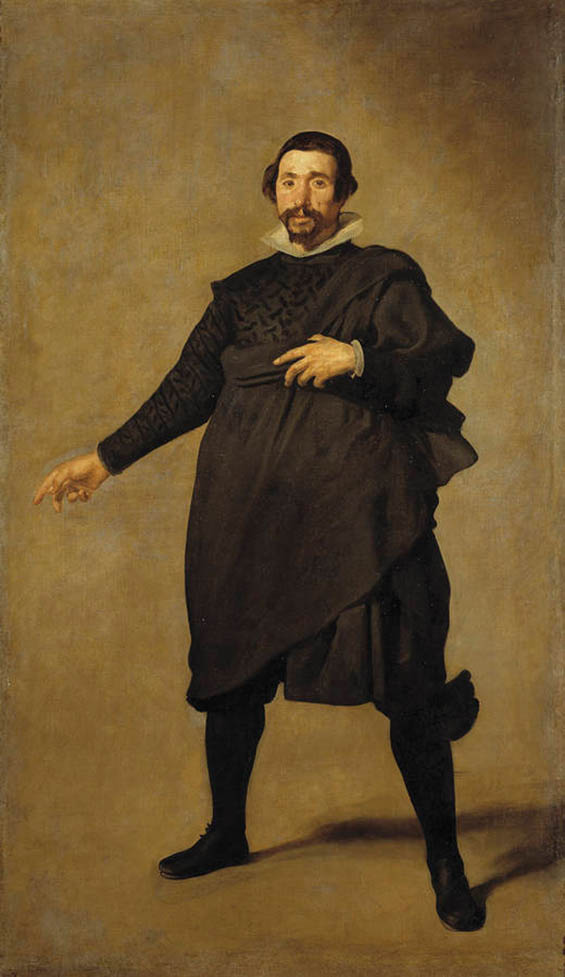
Portrait of Pablo de Valladolid • Diego Velázquez 1636-1637 Oil on canvas 212.4 cm × 125 cm (49.2" x 84") Museo del Prado, Madrid
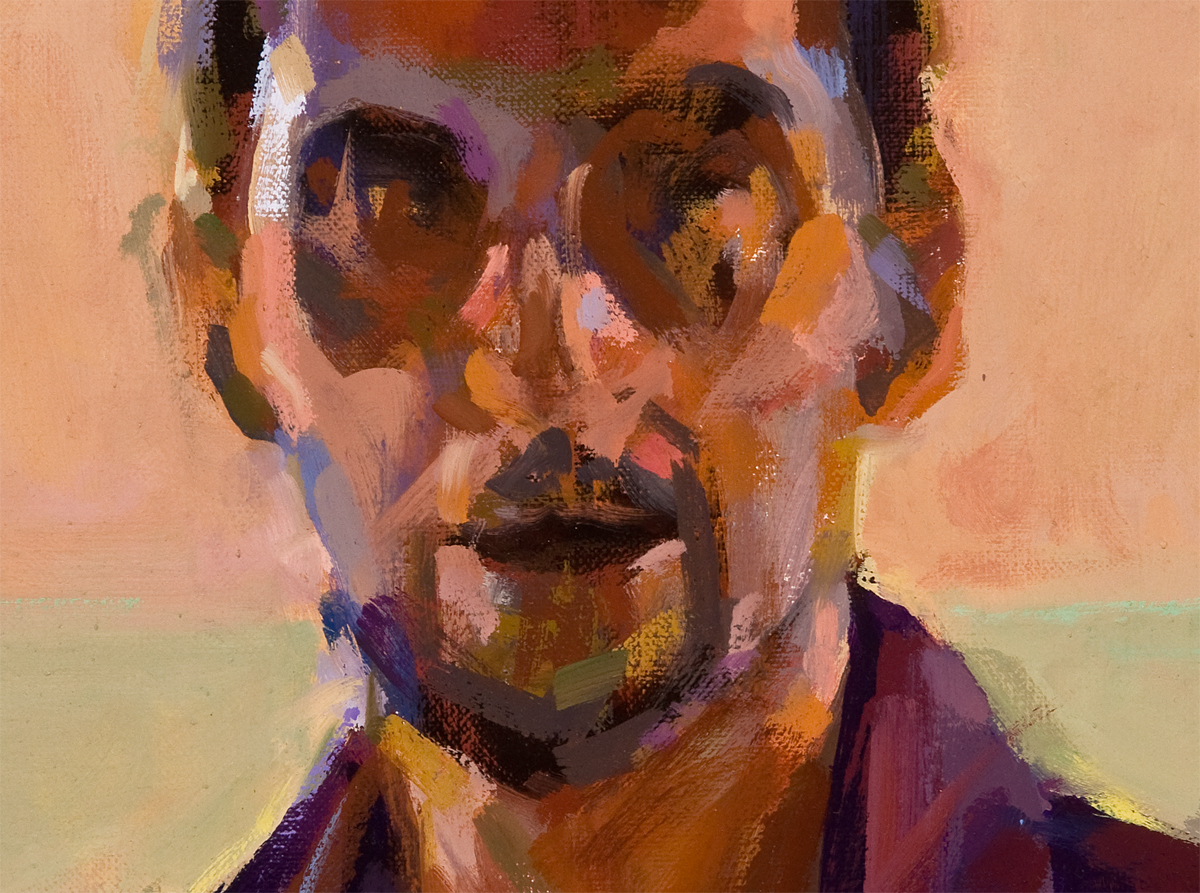
Detail - Jester (After Velazquez's Portrait of Pablo de Valladolid) • Joe Forkan oil on linen, 48" x 76" (121.92 cm x 193.04 cm)
The Lebowski Cycle at The Frank M. Doyle Arts Pavilion, Orange Coast College, Costa Mesa, CA • Sept 10 – Oct 28, 2011 Opening Reception: Saturday, September 10th 6-10pm

